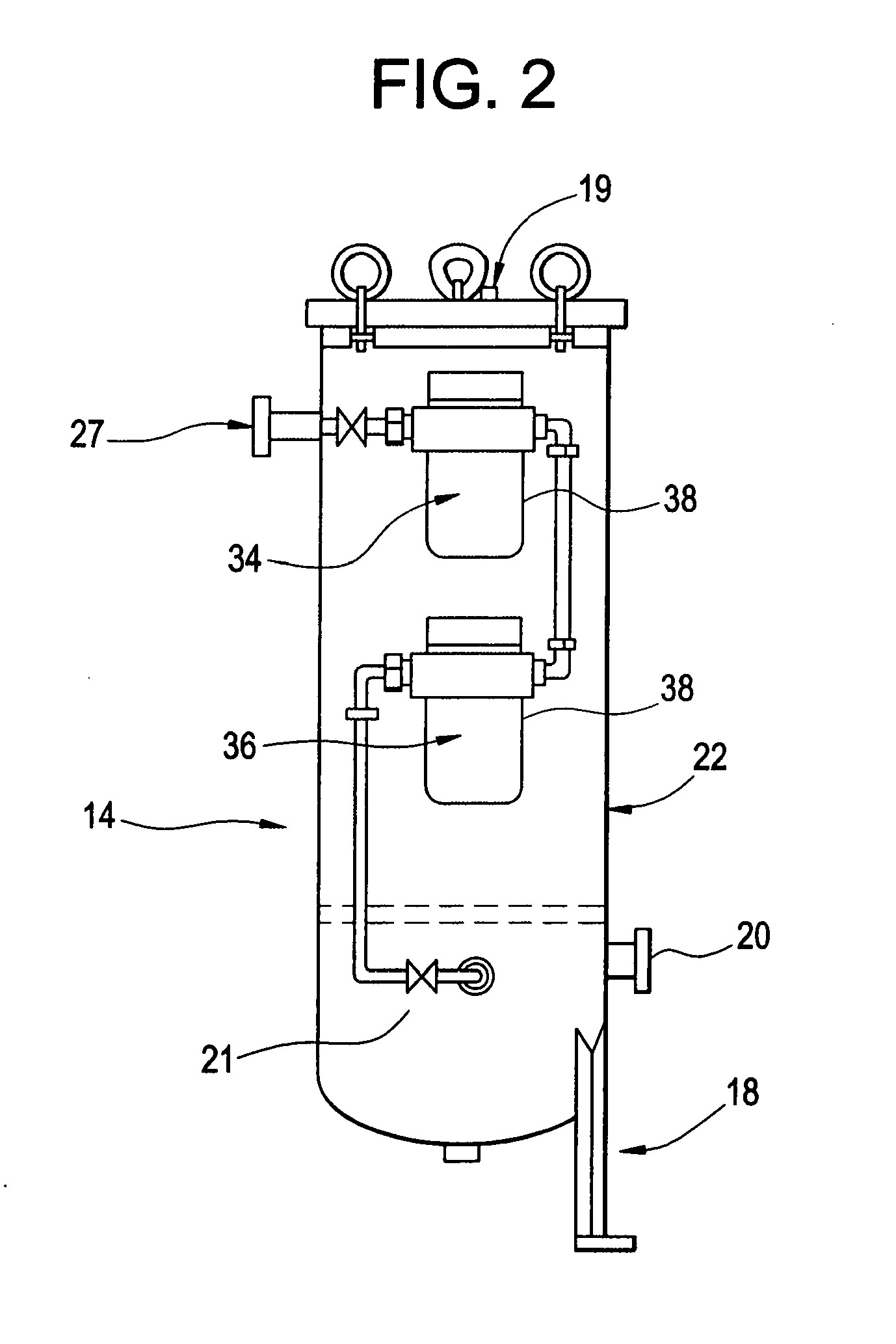Visual bilgewater quality indicator
a bilgewater quality indicator and visual technology, applied in the direction of vessel construction, separation process, nature of treatment water, etc., can solve the problems of reducing the detection efficiency of bilgewater, unable to eliminate sheen and remove all harmful contaminants, and unable to meet the requirements of environmental protection and environmental protection. , to achieve the effect of reducing the number of bilgewater discharges, visual enhancement, and easy visual detection
- Summary
- Abstract
- Description
- Claims
- Application Information
AI Technical Summary
Benefits of technology
Problems solved by technology
Method used
Image
Examples
Embodiment Construction
[0031]In a preferred embodiment of the invention illustrated in the drawings, a visual bilgewater quality indicator is provided, which utilizes a by-pass shunt composed of two filtration status chambers in series, each of which are provided with fluorescent or phosphorescent dye treated filtration media. These filters can be of the types discussed in my aforementioned U.S. Pat. No. 6,475,393 patent, wherein the filtration media is also treated with a fluorescent or phosphorescent dye having very high visibility such as a “hot pink” The filters can also be of the types disclosed in the present inventor's copending patent applications Ser. Nos. 11 / 180,301 and 11 / 181,372, filed respectively on Jul. 13,2005 and Jul. 14,2005. Oil droplets as small as one micron, are captured and immobilized by the primary filter and are instantly visible against the hot pink or similar high visibility background of the exemplary dye previously mentioned. Due to the ability of the infused media to permane...
PUM
 Login to View More
Login to View More Abstract
Description
Claims
Application Information
 Login to View More
Login to View More - R&D
- Intellectual Property
- Life Sciences
- Materials
- Tech Scout
- Unparalleled Data Quality
- Higher Quality Content
- 60% Fewer Hallucinations
Browse by: Latest US Patents, China's latest patents, Technical Efficacy Thesaurus, Application Domain, Technology Topic, Popular Technical Reports.
© 2025 PatSnap. All rights reserved.Legal|Privacy policy|Modern Slavery Act Transparency Statement|Sitemap|About US| Contact US: help@patsnap.com



